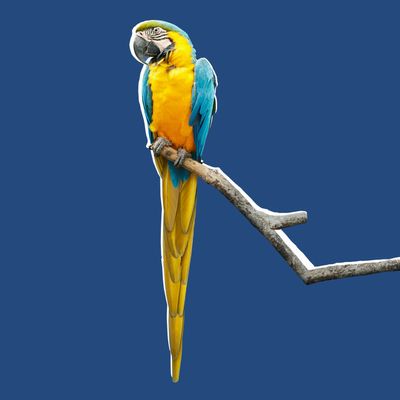
Birds already have one superpower in that they can fly, but their other big-time asset is in their tiny little skulls. As in: Parrots have the “technical intelligence” to solve problems insightfully. Crows reason about cause and effect, and build and use tools. So do cockatoos. Magpies recognize themselves in a mirror. Parrots can learn words and communicate with people. And, as the GIF below illustrates, they can be disarmingly thoughtful about hygiene.
All together, animal-intelligence researchers are saying that birds can be as smart as apes. But here’s the thing about our fine-feathered friends: As the epithet “bird brain” suggests, bird brains are small, and the established biological wisdom for many years was that the bigger the brain (especially relative to the animal’s overall size), the greater the cognitive ability of the animal. But a new study published in the Proceedings of the National Academy of Sciences gives a very practical explanation for that well-documented avian intellectual overachievement. It’s right there in the title: “Birds have primate-like numbers of neurons in the forebrain.” That’s because, the research team lead by zoologist Seweryn Olkowicz at Charles University in Prague, Czech Republic, finds that bird brains are incredibly dense with neurons.
The study used 73 birds of 28 species, all of which had been killed with a general anesthetic, whose brains were then removed and dissected into different brain regions before having cells, neurons, and non-neuronal cells counted. The numbers are pretty astounding: The brains of songbirds and parrots have twice as many neurons of primate brains of the same mass and two to four times more neurons that rodent brains of the equivalent mass. Take the super-cute goldcrest as an example: Its body mass is nine times smaller than that of the mouse, but its brain has twice the number of neurons. It’s impressive in regard to raw numbers, too: Ravens and kea parrots have 1.2 billion neurons in their cerebral cortex, a brain area associated with consciousness, more than capuchin monkeys have. The blue-and-yellow macaw has almost 2 billion neurons in the cerebral cortex — more than the rhesus macaques found in India and China.
Parrots and songbirds, the all-stars of avian smarts, are especially suited to complex cognitive tasks despite their relatively light brains. Since their brains are packed so tightly with neurons, the authors reason, the “information processing” capability of the brain is increased, to risk a computationalist metaphor. “Avian brains thus have the potential to provide much higher ‘cognitive power’ per unit mass than do mammalian brains,” Olkowicz and his colleagues write. This is all to say that it’s not the size of the brain in the bird that matters, but the architecture of the brain in the bird.




